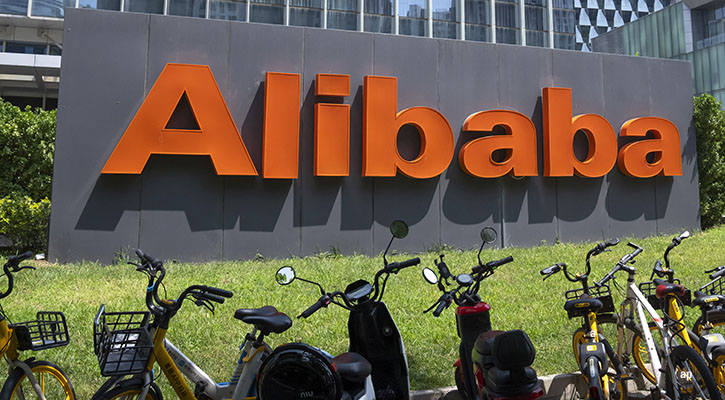From time to time, Morningstar publishes articles from third party contributors under our "Perspectives" banner. Here, Andrew Jessop, Executive Vice President and High Yield Portfolio Manager at PIMCO, comments on the high yield market performance and takes a look at why so many investors remain committed to an asset class that is typically associated with credit and liquidity risk. This article first appeared on www.pimco.com. If you are interested in Morningstar featuring your content, please provide your details and/or submit your article here.
The high yield market performed exceptionally well both last year and in 2009, recovering from the credit crisis that besieged the market in 2008 (the BofA Merrill Lynch U.S. High Yield Master II Index returned 57.5% in 2009 and 15.2% in 2010). But the situation has changed significantly since then, with yields falling to roughly 7% and prices pushing north of par. So, why do so many investors remain committed to this asset class, despite the typical risks associated with high yield bonds such as credit and liquidity risk?
Spreads Remain Attractive
The average spread on high yield bonds versus comparable Treasuries was roughly 500 basis points in March, which is slightly above the historical average and relatively wide versus the tighter levels seen in 2007 (closer to 250 basis points). For this reason, we think spread-sensitive products such as high yield and emerging market corporate bonds offer investors what we call “safe spread” opportunities, which PIMCO defines as the sectors that are most likely to withstand the vicissitudes of a wide range of possible economic scenarios.
In a world where duration can no longer serve as the anchor for portfolio construction, we believe high yield offers opportunity in part because this asset class typically has a relatively low correlation with other asset classes, particularly those with more interest rate sensitivity such as the Treasury market.
Also supportive of the high yield market today is the fact that investors still demand higher income in a low interest rate environment. Strong investor appetite for high yield bonds has continued. But, importantly, the bank loan market has also experienced a significant pick-up in demand. This is allowing a wider spectrum of speculative grade companies to access the capital markets, refinance their debt on favourable terms and not rely solely on the high yield bond market to improve their liquidity profiles. As the cost of borrowing comes down, additional cash flow is freed up and balance sheets are strengthened even further.
Default Rates Fall, Recovery Rates Rise
Since 2009, there has been nearly half a trillion dollars of high yield bonds issued, which represents almost 40% of the total outstanding global high yield market. For this very reason, most high yield companies do not face imminent liquidity requirements and, as a consequence, we have seen the default rate drop from an almost cyclical high to a cyclical low in the span of less than 18 months. Last year, the default rate on an issuer basis was approximately 2.4%, but is currently running at a rate of closer to 1.5%. If we look at it on a dollar-weighted or par-weighted basis, that default rate was less than 1% at the end of March.
At the same time, when a company does default, investors are not losing as much money as they would have lost two years ago. The average recovery rate on high yield bonds is close to a cyclical high of around 60 cents on the dollar, in contrast to the 20% recoveries in the first half of 2009. We expect the default rate to remain in the 1% to 2% range for at least the next 12 to 18 months, which would mean default losses of 1% or less.
Improving Corporate Balance Sheets
Corporate earnings have also been very supportive of the high yield marketplace. As the high yield reporting season draws to an end, most companies have reported strong results. Furthermore, the quality of earnings is starting to improve as we are no longer just reliant upon inventory restocking. Instead, we’re increasingly seeing volume demand for a broader range of manufactured goods.
Certainly, there are concerns in the near term about margins compressing, particularly in those industries that have a higher degree of sensitivity to rising oil prices, such as the airline industry. But other sectors are also vulnerable, indirectly. For instance, the cost of raw materials for plastic packaging companies has escalated significantly and manufacturers aren’t immediately able to pass those increased costs along to customers. Nevertheless, corporations have been a significant beneficiary of the effective zero interest rate policy and eased lending standards. As a consequence, corporate balance sheets today are in robust shape.
At this point in the credit cycle, with leverage ratios falling near their historic lows and most companies having reached their optimal debt structure, we believe further material deleveraging is unlikely. If we look at the higher quality portion of the high yield market in the double B category, we see that companies are no longer necessarily looking to further pay down debt and are now starting to turn attention to acquisitions and more equity-friendly share buybacks or dividend policies. At this point, we don’t think this is damaging to the overall credit quality. Most companies are doing this on a measured basis so as not to destroy their newfound financial stability. Therefore we feel relatively comfortable with the overall profile of the high yield universe to date.
Rising Rates and an Appetite for Risk
Clearly, there are changes afoot. The market is responding to fears about rising interest rates by taking on more credit risk, moving into the triple-C and lower-quality parts of the high yield market, which traditionally have very low interest rate sensitivity and are more closely correlated to the equity markets. We are looking selectively at those situations where we feel the company’s fundamentals are significantly improving and are looking to implement those opportunities across our portfolios where permitted.
Consistent with our views on the direction of longer-term rates, we have become wary of interest rate sensitive situations that reside primarily in the highest rated echelons of the high yield market. Our view might change if we became convinced there was a high probability of a significant event for a particular issue, such as an upgrade to investment grade, which could lead to material spread tightening and potentially offset the concerns we have about the impact of rising interest rates.
As a whole, the high yield market is providing a broader cross-section of opportunities as companies that have traditionally relied on the bank loan market are now looking to refinance with a more balanced use of secure debt and high yield securities. This has certainly been true for the past 12 months in the U.S. market and we’re now starting to see that trend appear in Europe where there was minimal high yield bond issuance in 2007 and 2008, as most companies took advantage of the very lenient terms available in the loan market.
Volatility has certainly picked up alongside the significant unrest in the Middle East/North Africa and more recently in the wake of natural disasters in Japan. While these events have not had a direct material impact on high yield companies, the influence on risk appetites and volatility across equity markets has been significant. We believe, however, that given the health of corporate balance sheets, these situations will likely play out similarly to the way the sovereign credit crisis played out in 2010, with modest disruptions to the high yield market.
As these geopolitical concerns elevated in early 2010 and eventually hit their peak in the middle of the year, risk appetites temporarily shifted towards “lower risk” investments and volatility spiked. Then, the panic faded and strong corporate fundamentals regained the spotlight. We’ve already seen this type of cycle of emotions play out through various periods of increased tension witnessed so far this year; including the revolution in Egypt, continued unrest in Libya and neighbouring countries, and more recently alongside the devastating earthquake, the destructive tsunami and ongoing nuclear reactor uncertainty in Japan. Just as we saw investors return to the high yield market when stability returned to peripheral Europe, we have already witnessed a return of risk appetites through these more recent events in 2011.
A Confluence of Encouragement
For all of the reasons outlined above, we believe the high yield market is well positioned in the current economy. U.S. policymakers remain accommodative and are unlikely to tighten monetary policy soon given their dual mandate of low inflation and full employment, the latter of which leads us to believe the Fed will remain on hold until at least 2012. Therefore, we believe the primary market for high yield bonds will remain strong, allowing companies the opportunity to further improve their balance sheets by extending their debt maturities and reducing the overall level of near-term credit risk.
The high yield asset class has demonstrated strong resilience, especially relative to equities, over the past year in the face of volatility from a variety of sources. While a repeat performance of 2009 or 2010 is highly unlikely, we believe high yield returns will be in line with speculative grade yields, with marginal upside from potential spread compression. For investors seeking high income and also a higher position in the capital structure relative to equities, we continue to believe the high yield market offers safe spread opportunities in the current environment.
Morningstar Disclaimer: All views expressed in this third party article are those of the author(s) alone and not necessarily those of Morningstar. Morningstar is not responsible for the comments nor will it be liable in any way for any information provided by the author.
PIMCO Disclaimer: This material contains the current opinions of the author but not necessarily those of PIMCO and such opinions are subject to change without notice. This material has been distributed for informational purposes. Forecasts, estimates, and certain information contained herein are based upon proprietary research and should not be considered as investment advice or a recommendation of any particular security, strategy or investment product. Information contained herein has been obtained from sources believed to be reliable, but not guaranteed. No part of this material may be reproduced in any form, or referred to in any other publication, without express written permission. Pacific Investment Management Company LLC, 840 Newport Center Drive, Newport Beach, CA 92660, 800-387-4626. ©2011, PIMCO.
Click here for PIMCO's full disclaimer.






















